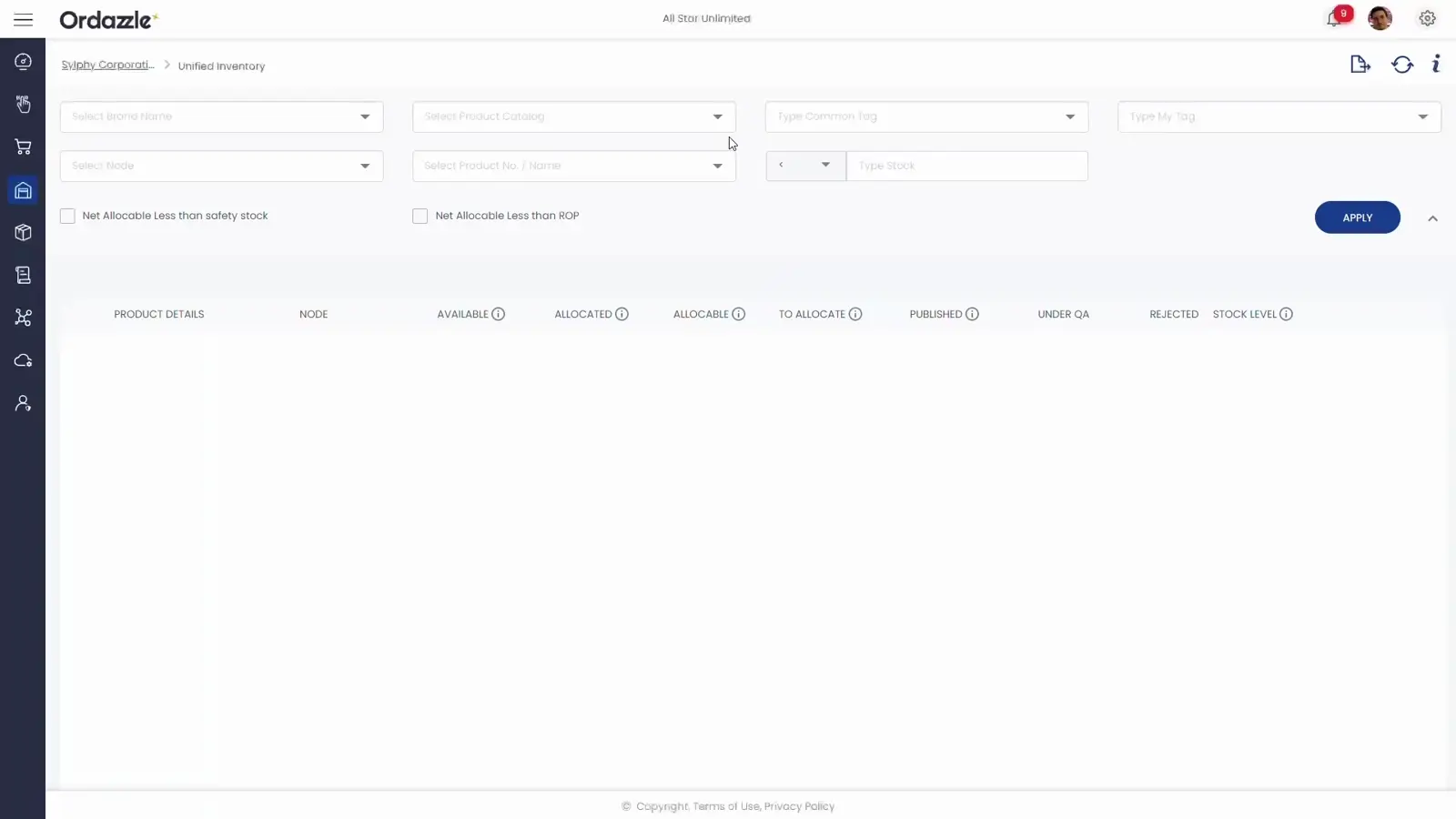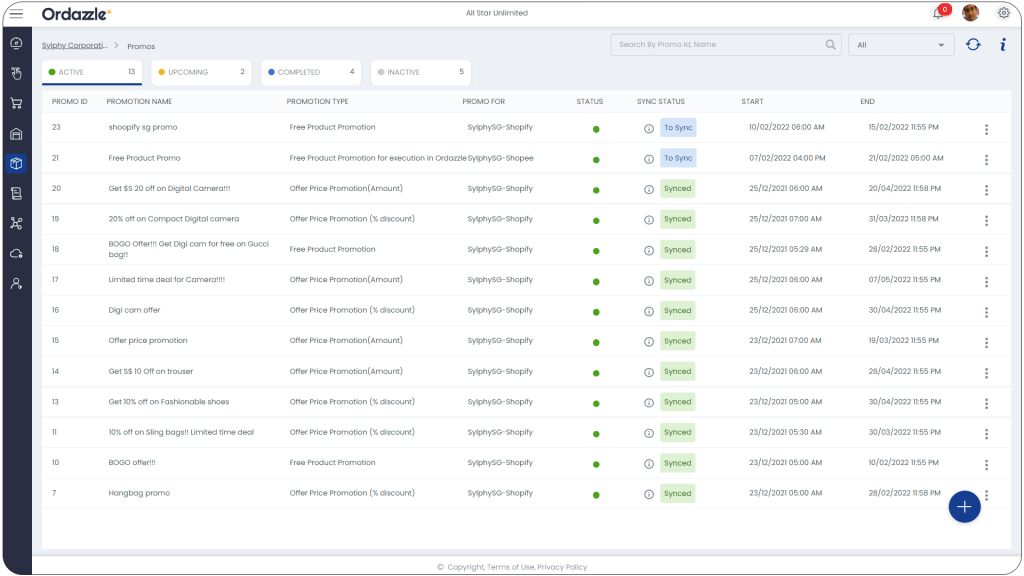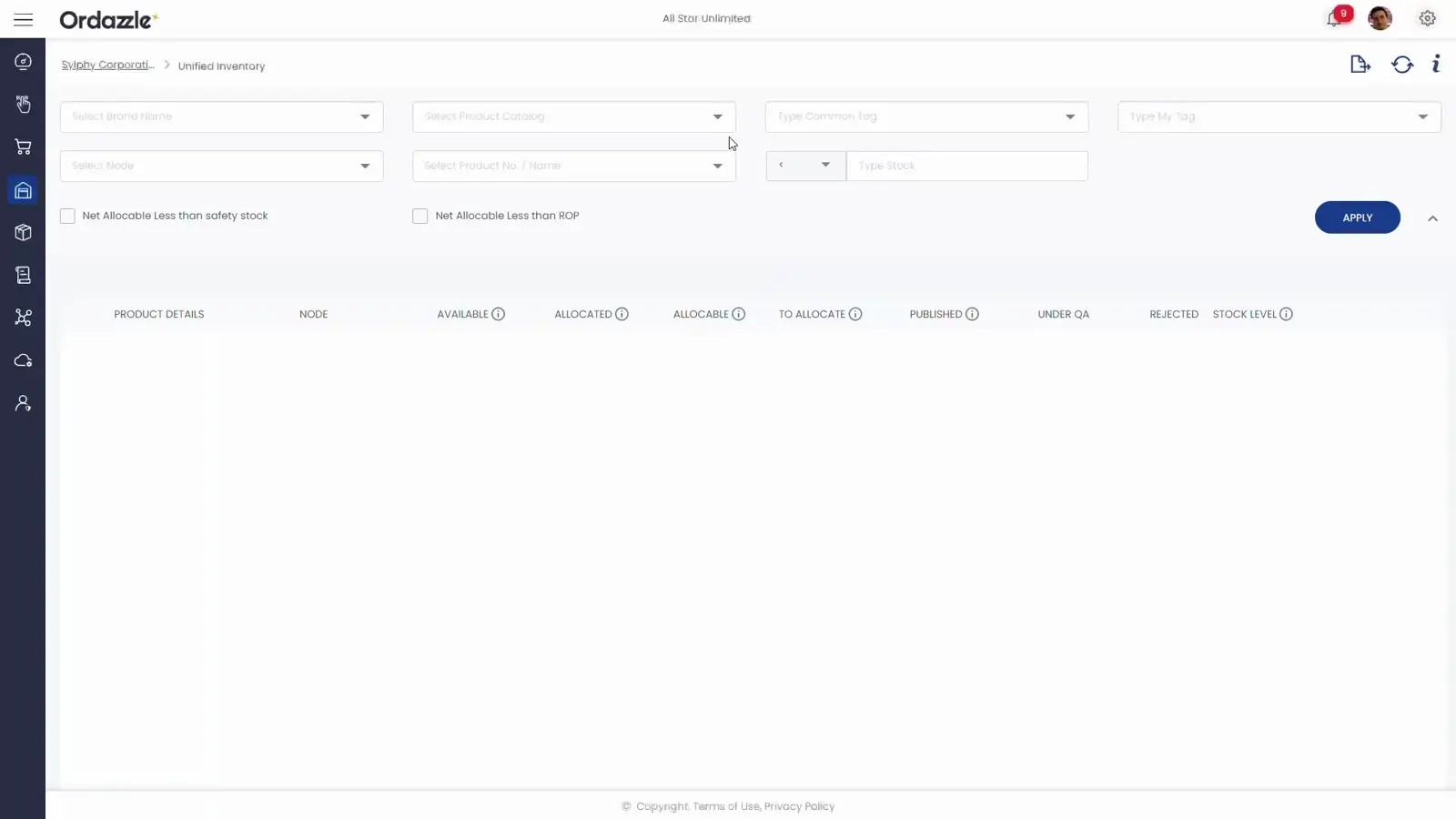e-Commerce inventory management software & multi channel inventory management software.
Inventory Management System, elevated
Maximize efficiency with Ordazzle’s best-in-class e-Commerce inventory management software. Our system ensures real-time monitoring, control, and optimization across all nodes. Seamlessly integrate with marketplaces and webstores, minimizing revenue losses with a unified view of inventory. Trust our e-Commerce inventory management to deliver the right products, at the right place, and at the right time. Experience the power of multi-channel inventory control with our cutting-edge solution.

Optimize inventory control operations: e-Commerce inventory management system

Multi-Node Management
Consolidate stock data in real-time from across multiple fulfilment.
Unified Inventory Visibility
Ensure your inventory data across channels is accurate and updated.
Pick, Pack & Ship
Intelligently route orders from multiple webstores & marketplaces.
Stock In, Stock Out
Configure nodes for fulfilment and SKU reorder rules for each marketplace or webstore.

Efficient e-Commerce operations with e-Commerce inventory management software
Unify inventory data across multiple nodes & warehouse
Sync real-time inventory data across all channels
Drive results with Smart Order Routing
Allocate, split, and bundle inventory efficiently
FAQs Of Inventory Management Software
What is an inventory management system?
An inventory management system (IMS) is a tool or software that helps retail businesses in tracking, organizing, and controlling their inventory. It guarantees adequate inventory for businesses to fulfill client demand without overstocking or running out. These systems monitor inventory levels, sales, orders, and delivery, allowing for more effective operations management. Businesses may also utilize them to predict demand, save waste, and boost production.
What are the functions of the inventory management system?
An inventory management system tracks and organizes stock, monitors inventory levels, and ensures product availability. It helps businesses manage orders, restock supplies, and fulfill shipments efficiently. The system also tracks sales, returns, and stock movements in real-time, providing accurate data for better decisions. It aids in demand forecasting, preventing overstocking or stockouts, and reducing waste. Automating these tasks saves time, increases accuracy, and ensures smooth operations, keeping customers satisfied and businesses running effectively.
How does an inventory management system work in e-Commerce?
In e-Commerce, an inventory management system monitors items from the moment they are advertised online until they are sold and sent. The system automatically updates inventory levels in real-time as orders are placed or new stock is added. The system gives real-time information on product availability, reducing overselling and stockouts. It also facilitates stock management across numerous sales channels, such as websites or marketplaces. The inventory management system also manages returns and exchanges, ensuring that inventory is appropriately updated and allowing businesses to fulfill consumer requests more effectively.
How does an inventory management software work?
Inventory management software helps online businesses track and control their stock efficiently. It works by recording each product’s movement, such as when it’s received, sold, or returned. The software updates inventory levels in real-time, providing accurate data on stock availability. It can automatically generate alerts when stock is low, helping businesses reorder items on time. The software also organizes products, tracks sales trends, and helps forecast future demand. It can be integrated with other systems like sales platforms and accounting software, streamlining the entire supply chain process. By automating these tasks, inventory management software saves time and reduces errors.
How much does an inventory management software cost?
Cost varies depending on the software’s features, size of the business, and integration requirements.
How to choose the best inventory management software?
To choose the best inventory management software, start by evaluating your business needs. Look for features like real-time tracking, reporting, and integration with your sales platform. Consider scalability to accommodate future growth and ease of use for your team. Customer support, security, and cost are also important factors. Make sure the software can handle your specific industry requirements and offers mobile access if needed. Looking for an inventory management system, then Ordazzle stands out as one of the best choices, offering user-friendly features, seamless integration, and excellent customer support tailored to businesses of all sizes.
What are inventory management techniques?
Inventory management systems enable organizations to keep track of their inventory and satisfy client demand without overstocking or running out. Common techniques of inventory management include:
Just-in-Time (JIT) inventory ordering reduces storage expenses by ordering just what is needed.
ABC Analysis: Products are divided into three categories (A, B, and C) depending on their worth and importance, allowing for more emphasis on high-value products.
FIFO (First-In, First-Out): Older inventory is sold first to avoid product expiry or obsolescence.
Reorder Point: Stock is reordered when it hits a certain threshold.
These methods increase efficiency, lower costs, and ensure appropriate inventory levels.
Why is inventory management important?
Inventory management is vital because it helps businesses maintain the proper stock balance, ensuring they have enough items to fulfill client demand without overstocking. This reduces the risk of stockouts and excess inventory, resulting in lower storage expenses. Proper inventory management also allows firms to make more informed decisions, reduce waste, and increase efficiency. It promotes seamless operations, prompt order fulfillment, and improved cash flow management, resulting in higher customer satisfaction and long-term business success.
Why is inventory management important in e-Commerce?
Inventory management is critical in e-Commerce because it guarantees that items are accessible when buyers need them. It assists e-Commerce businesses in avoiding stockouts, backorders, or overselling, which can erode consumer confidence. Real-time updates provide precise inventory tracking across several platforms, increasing productivity. Effective inventory management also allows firms to prepare for demand, avoid overstocking, save storage costs, and simplify order fulfillment, all of which lead to higher customer satisfaction and sales.
What is inventory control system?
An inventory control system is a tool used to manage and organize a company’s products or goods. It helps businesses keep track of what they have in stock and what they need to reorder. This system can be managed through inventory management software or an inventory management system, which are designed to streamline the process.
It’s crucial for maintaining optimal stock levels, preventing overstocking or understocking, and ensuring efficient operations. For online businesses, e-commerce inventory management and multi-channel inventory management are essential to track products across various platforms. The best inventory management software offers features like real-time updates, sales forecasting, and order tracking, enhancing overall inventory control management for businesses.
What is the major challenge in inventory management?
The biggest problem in managing inventory is keeping the right amount of items available. If you have too much, it costs money to store and might go to waste.
If you have too little, customers get upset as they can’t buy what they want. This balancing act is hard because it depends on lots of things like sales patterns, supplier delays, and seasonal changes.
Good inventory management needs accurate forecasting, knowing when to reorder, and having a system to track what comes in and goes out. If these things aren’t done well, a business might lose money and customers.
Technology can help with better tracking and predicting, but human decision-making is still vital. Communication is also key; different departments like sales and purchasing need to share information to avoid overstock or stockouts. In short, finding the right balance between supply and demand, using data smartly, and having smooth teamwork are all crucial challenges in inventory management.
What is the importance of inventory management system for a business?
An inventory management system is very important for a business. It helps the business keep track of the things it has to sell or use online (e-commerce) or in different places (multi-channel).
The system helps the business know how much of each item it has. This is good because the business can avoid having too much or too little of something. Having too much can tie up money that could be used for other things. Having too little can make customers unhappy and cause them to go to another business. The best inventory management software helps with all of this.
In e-commerce, inventory management software is like a helper. It keeps track of what’s in stock and what’s sold. This is important because it keeps the business running smoothly.
What is the main purpose of multi channel inventory management software?
The main reason for using multi channel inventory management software is to help people handle their products and stock more easily. This type of software is used by businesses that sell things through various channels like online stores, physical shops, and more. It helps them keep track of how much stuff they have, where it is, and when they need to reorder more.
With this software, people can avoid selling products they don’t have, which makes customers happier. It also stops them from having too much of something and wasting money. The software lets people see their inventory across different places they sell things, so they can manage everything from one place. This saves time and makes things less confusing.
It organizes products, keeps stock in check, and lets people sell without worries.
It’s all about making sure businesses have the right stuff at the right time in the right places.





